Photography Tips
Hot/Cold Timetables
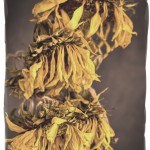
When my children were in Primary School they had what they called hot day timetables or wet day timetables. These were contingency plans for when the children couldn’t play as normal. I thought it would be a great idea to explore this option for photographers as I had a comment from a new blogging friend who told me she was getting too depressed from being trapped inside in the extreme weather that the Northern Hemisphere has been experiencing. I understood it when I got it because I realised that it would be us in Southern Australia being stuck inside trying to stay cool that would be getting depressed because we couldn’t really get out and take photos. I thought this would be a great time to take a look at what you can do when you can’t get outside to take photos. There are options, many of them really, not all… | Read the full article
Is Imitation the Best Form of Flattery?
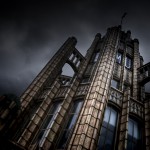
Happy New Year everyone, hopefully you all had a great time over the break and are ready to get stuck into the year ahead. Back in November I did a post on Finding What Inspires You, I talked about many different ways to find inspiration, and one of the ways that artists are taught to find it is to look at the work of others. We try to get inspired from what others are doing and see if we can put some of that into our own work. When I was at art school we were encouraged to copy the work of others and try to do exactly what they did, so we could learn. I did some of that, though much of what I did never came off as well as the masters. It was a great way to learn. One lecturer used to say it to us… | Read the full article
Rules, Rules, Rules
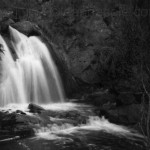
When I first got into photography I was given a Pentax K1000 for my birthday and I had no idea how to use it. It was a long time ago and the internet wasn’t around so I couldn’t google “how do I use my SLR”, so I had to figure it out for myself. Trial and error got me there. I did one course at the CAE here in Melbourne, but it was about black and white processing, didn’t really help with learning how to use it. I did read a lot, and I figured out what it all meant. Composition was a different thing though. I had to learn that on my own. I had to work out what was the best way an image looked. Then I did a beginners course at a local camera club and I learned the”Rules”.The rules that say everything must be on… | Read the full article
Finding What Inspires You

You hear the word inspiration used a lot with artists, what inspires them to paint or draw, but it isn’t a word that photographers use a lot. We seem to have things that we love photographing and we just photograph them right? Though there has to be something behind that, something that drives you to photograph it. It can be called many things, inspiration, drive, passion, influence, motivation, incentive, probably many many more words that are used to basically describe the same thing. So what is inspiration? I found a definition when I googled inspirations the process of being mentally stimulated to do or feel something, especially to do something creative Sounds easy, you will be stimulated, you will feel something, and then you will do something really creative. I wish it was that easy, and I know for a lot of people finding inspiration can be so hard…. | Read the full article
Are You Covered
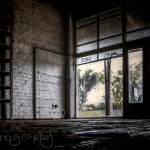
My followers know recently that I photographed a wedding, I wasn’t the main photographer, I was the second photographer with very specific requirements. I had never met the other photographer before and, as you do, we got talking. One of the things that came up was insurance. I asked him if he had insurance, and he said yes, he had all his gear covered under his house and contents insurance. That is something a lot of us have, you get special insurance on your contents that protects your gear when you are away from the house. I replied, is that all. He looked at me and I said, what about public liability insurance? What about the insurance you get to cover you if something happens to all the photos you have taken? It has not occurred to him that he would need any further insurance. He was fairly… | Read the full article
The Grey in Between
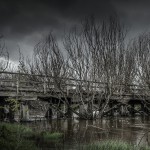
Today I want to tell you a couple stories. This is a story about something that has happened to me, and some things that have happened to other people, something that could have happened to you, or might happen to you. I use Nikon, I love Nikon gear and have been a Nikon person for many years now. When you get into DSLRs and choosing your gear, you do have to think about it like a life choice, because once you get the gear you want, well it is hard to change. So I have put a lot of money into my equipement, I would hate to think exactly how much, but a lot. I know that Nikon have this thing called the Nikon Professional Services, or NPS for short. To be a member you have to fill certain criteria, which you can find on the NPS page. I first heard… | Read the full article
Shapes and Curves in the City of Melbourne
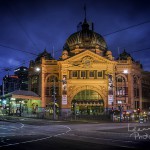
This is my first contribution to this blog, and I would like to say hello. I thought I could do my first post on something that I am very passionate about, Melbourne. I love this city, and I think it is a photographers dream. I know when most people think of Melbourne they think sport, Australian Open, AFL, Grand Prix, or coffee, fantastic coffee culture here, and there is food. The other thing that people think, is weather, we are known for our bad weather. Apparently it always rains here, though Sydney gets more rain a year than Melbourne. It is true, though the weather here can be rather unpredictable. Being a photographer living in Melbourne means, you deal with the weather and work around it. There is one part of Melbourne that I really don’t think gets enough publicity, our architecture. Flinders Street Station is a very obvious building… | Read the full article
Photoshop Tips

One of the great things about digital photography is that it gives the average photographer the ability to see an image through from its initial conception to its final display with a minimum of fuss and with a great degree of control. It is easy to take this for granted, but older photographers will still remember the long hours spent bent over trays of smelly chemicals in a tiny darkroom, or the long days or even weeks spent waiting for a roll of film to be processed by someone else before you could view the final image. And even then, if there was something awry with the colour temperature, contrast, or any other aspect of the image, the capacity to fix it was very limited. The development of photo-editing software like Photoshop has played a huge part in granting photographers great freedom to take full control of their images. Of… | Read the full article
Safety Tips For Seascape Photography
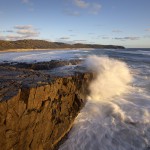
Some years ago, I made a serious error of judgement that could easily have brought my time on this planet to a messy end. I’d gone down to my favourite fishing spot on the tip of a rocky headland and was far more intent on catching dinner than thinking about my safety. Shortly after I arrived, a set of extra large swells rolled in and swamped the rock platform where I stood – the first only wet me up to my knees but I could see the next ones were bigger. There was no time to retreat to higher ground and the second wave picked me up and bounced me across the rocks before dumping me into deep water off the edge of the platform. Through sheer luck, the next wave didn’t pound me back into the rocks, but dragged me seaward where for the next twenty minutes I bobbed… | Read the full article
Say No To Chromatic Aberration!
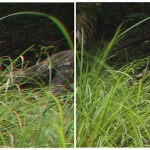
I must admit to being a Facebook junkie…but purely for professional purposes of course. The ability to see new landscape images from so many talented photographers around the world, often on the same day the image was captured, is incredibly inspiring and just an amazing way to connect with a worldwide community. But one thing that surprises me is how many good, and sometimes very good, photographers fail to correct chromatic aberration (CA) in their images. It surprises me because it is such an easy thing to correct, and because CA can turn an otherwise excellent image into an eyesore. Chromatic aberration arises when a lens fails to focus the different wavelengths of incoming light onto the same plane (the camera sensor), resulting in unsightly coloured fringes in an image. These fringes also makes images appear soft, and additional sharpening to offset the problem only results in sharper colour fringes…. | Read the full article
